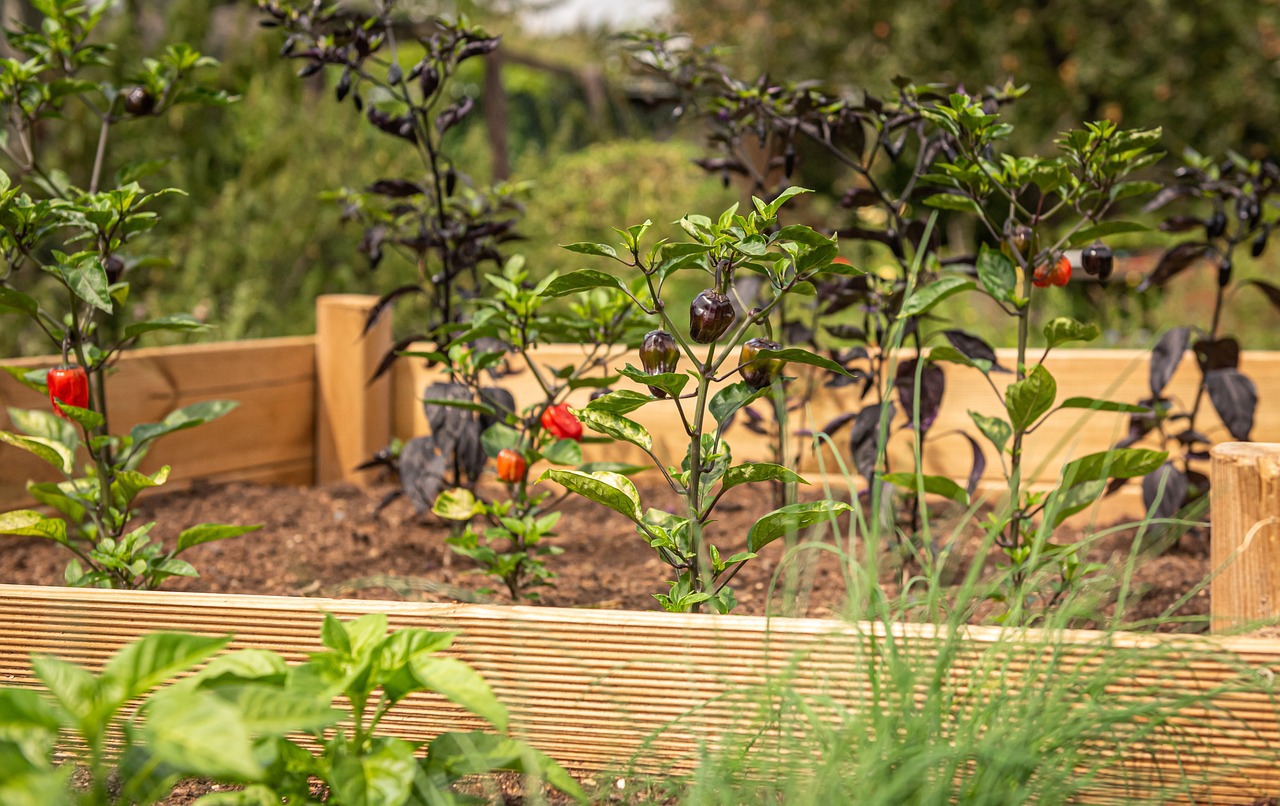
Embarking on the journey of cultivating a flourishing oasis of fresh produce in your backyard? The secret to unlocking the full potential of your gardening venture lies in the art and science of a Raised Bed Food Garden. In this comprehensive guide, we’ll explore the seven secrets that will elevate your gardening experience and yield a bountiful harvest.
1: Laying the Foundation for Flourishing
Forget tilling backbreaking furrows; embrace the elevated realm of the raised bed. Craft a sturdy fortress for your flora, using wood, bricks, or even recycled tires. Fill it with a rich tapestry of soil, a blend of loamy goodness, aged compost, and perhaps a dash of sand for drainage. This becomes your canvas, a fertile haven where roots pirouette in space and nutrients pirouette in harmony.
2: The Soil Symphony – A Chorus of Nutrients
Don’t settle for a monotone dirge – let your soil sing a vibrant symphony of nutrients. Compost, the maestro of this orchestra, adds melody with its organic bounty. Bone meal lends a deep bass note of phosphorus, while potassium, the sprightly piccolo, comes courtesy of wood ash. Test your soil, understand its language, and fine-tune the composition to match your chosen crops. Remember, happy soil means happy harvests.
3: Sowing the Seeds of Success (Planting with Precision)
Resist the urge to scatter seeds like confetti on a whim. Each plant deserves its own starring role, so map out your raised bed with military precision (or at least, the precision of a child building a Lego castle). Consider spacing, sunlight needs, and companion planting. Let lettuce waltz with strawberries, tomatoes tango with basil, and create a vibrant tapestry of flavors that would make Monet weep tears of joy.
4: Sunlight – The Spotlight on Growth
Not all bask in the same limelight. Sun-worshippers like tomatoes crave long hours bathed in golden rays, while leafy greens prefer the dappled shade of taller companions. Observe the sun’s arc across your raised bed, and choreograph your plant placements accordingly. Remember, sunlight is the sculptor of your leafy masterpiece, so use it wisely.
5: Watering Wisdom – From Drizzle to Downpour
Water, the elixir of life, can be both a gentle drizzle and a roaring torrent. Learn to read the thirst in your plants’ eyes. Wilting leaves plead for a life-giving shower, while perky stems sing of contented hydration. Employ drip irrigation for a targeted sprinkle, or wield a watering can with the grace of a celestial rainmaker. Consistency is key, so listen to the rhythm of the soil and dance with the droplets.
6: Mulch – The Master of Moisture and More
Think of mulch as a protective blanket for your soil, a superhero shielding it from the scorching sun and the thieving weeds. A layer of straw, wood chips, or even recycled cardboard not only conserves moisture but also smothers weed seeds in their infancy. Plus, it decomposes over time, adding valuable nutrients to your soil symphony. Mulch – the tireless guardian of your raised bed paradise.
7: Weeding Warriors – Banishing the Botanical Bandits
Weeds, the unwelcome guests at the feast of abundance, may try to steal the spotlight from your precious crops. But fear not, for you are the valiant weeding warrior! Armed with a gentle hand and a sharp hoe, banish these botanical bandits before they can wreak havoc. Mulch, as your loyal ally, will help keep their numbers in check. Remember, a weed-free raised bed is a happy raised bed, one overflowing with the fruits (and vegetables) of your labor.
8: Composting – From Scraps to Salvation
Waste not, want not, especially in the raised bed paradise. Kitchen scraps, yard trimmings, even that expired coffee ground – they all hold the potential for resurrection as nutrient-rich compost. Let a compost bin be your cauldron of transformation, where wilted leaves rise anew as potent soil amendments. This not only reduces waste but also completes the beautiful cycle of life within your miniature Eden.
9: Pollinator Pals – Welcoming the Winged Wonders
Your raised bed isn’t just a feast for your eyes and stomach; it’s a buzzing ballroom for bees, butterflies, and other pollinating pals. Plant nectar-rich flowers like zinnias and cosmos to entice these vital guests. Their joyful dance from blossom to blossom ensures bountiful harvests, a testament to the delicate balance of nature’s symphony.
10: Succession Sowing – Keeping the Bounty Flowing
Don’t let your raised bed become a fallow stage when one harvest ends. Embrace the art of succession sowing, a technique where you plant new crops as others mature. Radishes can follow peas, spinach can fill the gaps left by kale, and lettuces can thrive in the cooler days after tomatoes. This continuous cycle keeps your soil active, your table laden, and your garden buzzing with life.
